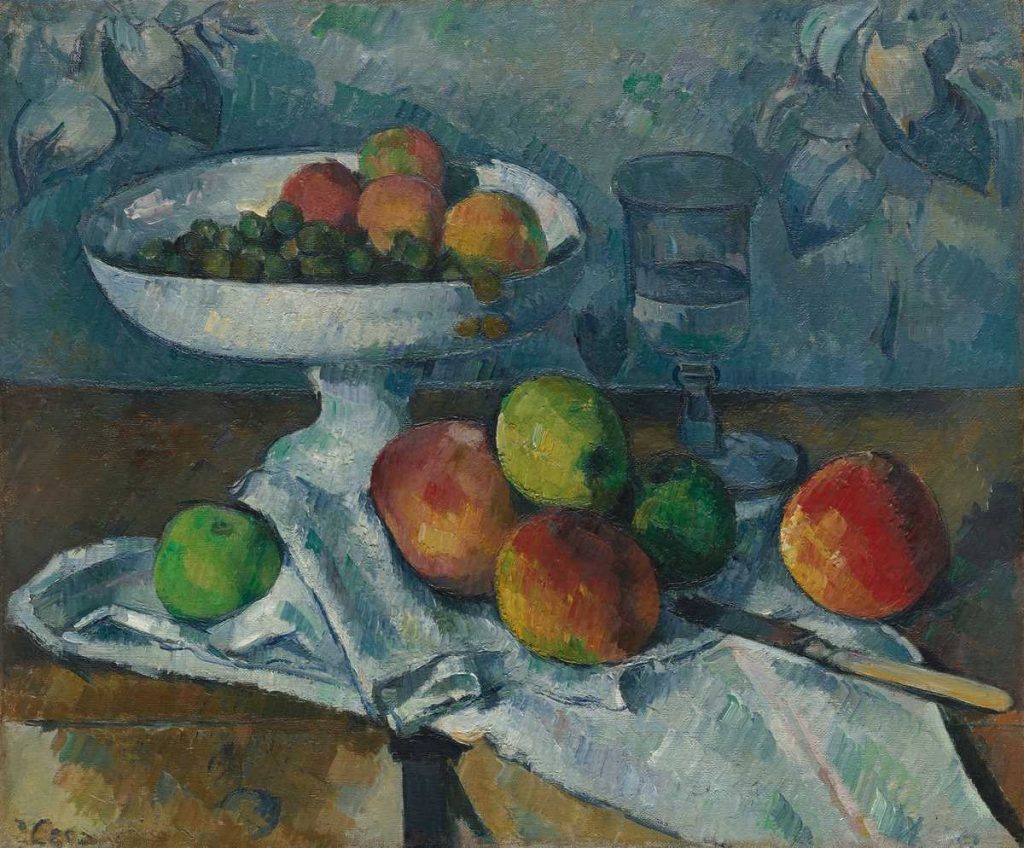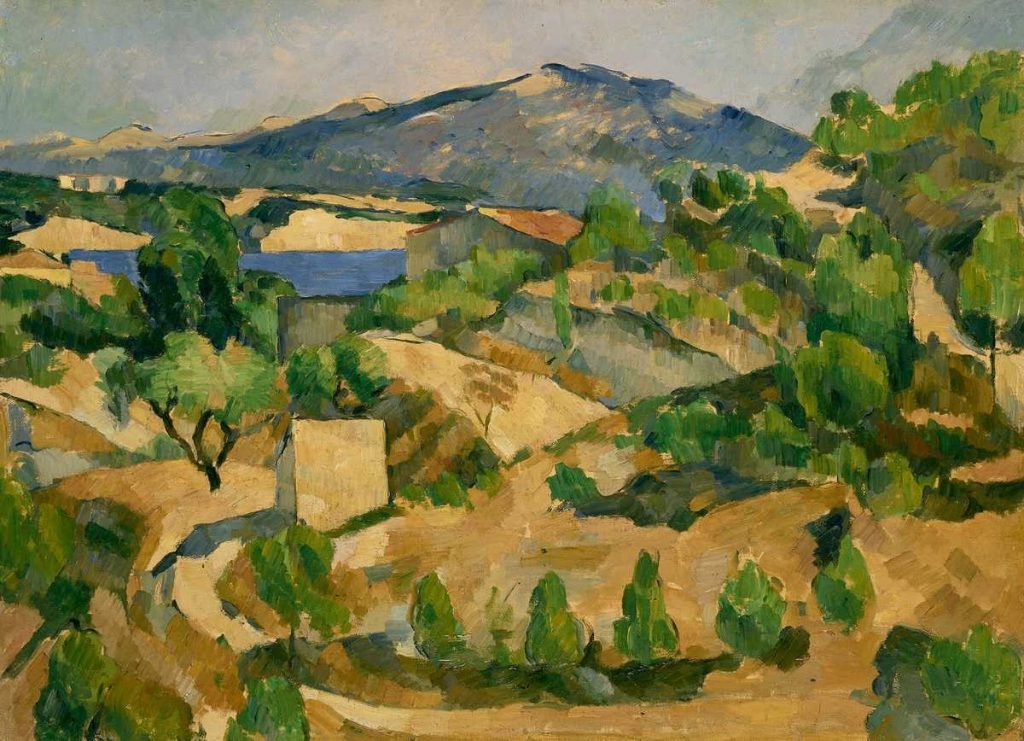‘With an apple, I will astonish Paris’, Paul Cezanne once claimed. Leaving his native Aix-en-Provence for the French capital in his twenties, this is precisely what he did. Here, we gather an array of artists from Cezanne’s time and from our own to tell the story of his extraordinary legacy.

Paul Cezanne. Still Life with Fruit Dish. 1879–80. Oil paint on canvas. 46.4 × 54.6 cm. The Museum of Modern Art, New York. Digital Image © 2022, The Museum of Modern Art/Scala, Florence.
Each new generation inherits the world of its predecessors, deciding what to keep and what to reject. Values, tastes, stories and art can be cast aside, or continue to resonate, sustaining or even gaining relevance over the years.
Paul Cezanne was born in Aix-en-Provence in the south of France in 1839. His father, a respectable businessman and banker, wished his only son to attend the prestigious local law school. Cezanne had other ideas. He wanted to be an artist – and more of a rule-breaker than a rule-follower at that. In 1861 he travelled to Paris to join his school friend, the celebrated author Émile Zola, and his creative circle. Here, he rejected what he saw as the stale practices being taught in the leading art schools, and the conservative paintings that were lauded at the annual state-organised Salon exhibition. Cezanne preferred to associate with lesser-known and more derided artists: Claude Monet, Pierre-Auguste Renoir and Camille Pissarro. So it was that Cezanne set about dismantling the old rules of art and building anew. ‘With an apple, I will astonish Paris’, he proclaimed.
Seen first as a fringe member of the impressionist group, recognition came only gradually in the later years of his life when a younger generation of artists lauded him as their hero. ‘My one and only master’, Pablo Picasso would later call him; ‘the apple of my eye’, said Paul Gauguin of Cezanne’s Still Life with Fruit Dish 1879–80, his prized possession: ‘I would part with it only after my last shirt.’
Growing admiration from artists still did not translate into widespread recognition. In 1896, the French state turned down three Cezanne paintings, and in 1921, after his death, Tate declined an offer to borrow and display The François Zola Dam 1877–8, a work later described by the critic Roger Fry as ‘one of the greatest of all Cezanne’s landscapes’.

Paul Cezanne. The François Zola Dam. 1877–8. Oil paint on canvas. 54.2 × 74.2 cm. Bequeathed by Gwendoline Davies, 1951. Ar fenthyg gan / Lent by Amgueddfa Cymru – National Museum of Wales.
The tide, however, was irreversible. Tate changed its position to become the first UK national museum to display Cezanne the following year, and the first to acquire his work in 1925. At Tate’s landmark 1996 retrospective, Cezanne attracted a record-breaking 408,608 visitors. A spectrum of 1990s superstars clamoured to see it, among them Princess Diana and Meat Loaf.
We now look at Cezanne through new lenses, with new questions. How did he react to the turbulent political and social transformations of his time? How did he balance the influence of metropolitan Paris with that of his beloved rural homeland? Should we continue to revere this one-time rule-breaker, now a core figure of modern art? As Cezanne himself said: ‘we should not be content with holding onto the beautiful formulas of our illustrious predecessors.’
What the following contributions demonstrate is that Cezanne remains a paramount source of inspiration and astonishment to today’s artists. This exhibition presents a once-in-a-generation chance for you to discover, or rediscover, Cezanne for yourself.
‘The EY Exhibition: Cezanne’ is presented in the Eyal Ofer Galleries, Tate Modern, 5 October 2022 – 12 March 2023. Curated by Natalia Sidlina, Curator, International Art, Tate Modern, Gloria Groom, Chair and David and Mary Winton Green Curator, Painting and Sculpture of Europe, Caitlin Haskell, Gary C. and Frances Comer Curator, Modern and Contemporary, Art Institute of Chicago and Michael Raymond, Assistant Curator, International Art Tate Modern. The exhibition is part of The EY Tate Arts Partnership. Supported by the Huo Family Foundation, with additional support from the Cezanne Exhibition Supporters Circle, Tate International Council, Tate Patrons and Tate Members. Organised by Tate Modern and the Art Institute of Chicago.
Source: Tate







